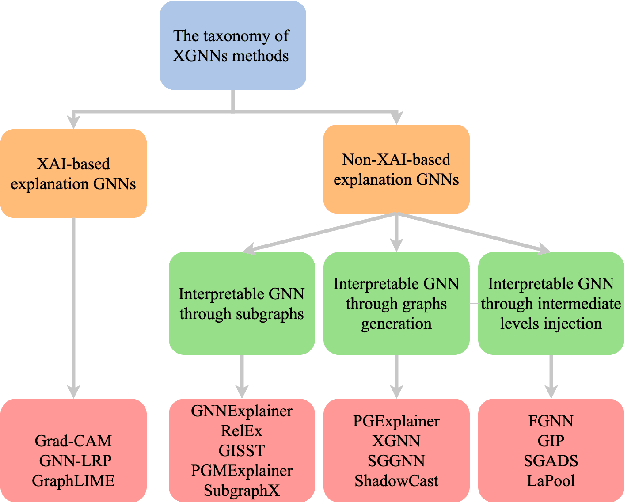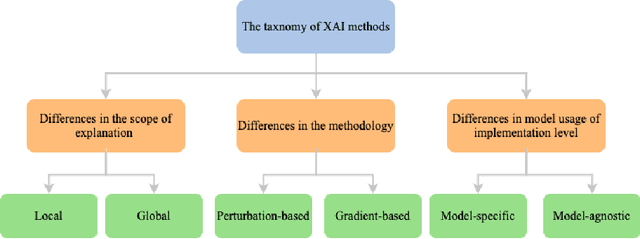Yiqiao Li
Can LLM Assist in the Evaluation of the Quality of Machine Learning Explanations?
Feb 28, 2025Abstract:EXplainable machine learning (XML) has recently emerged to address the mystery mechanisms of machine learning (ML) systems by interpreting their 'black box' results. Despite the development of various explanation methods, determining the most suitable XML method for specific ML contexts remains unclear, highlighting the need for effective evaluation of explanations. The evaluating capabilities of the Transformer-based large language model (LLM) present an opportunity to adopt LLM-as-a-Judge for assessing explanations. In this paper, we propose a workflow that integrates both LLM-based and human judges for evaluating explanations. We examine how LLM-based judges evaluate the quality of various explanation methods and compare their evaluation capabilities to those of human judges within an iris classification scenario, employing both subjective and objective metrics. We conclude that while LLM-based judges effectively assess the quality of explanations using subjective metrics, they are not yet sufficiently developed to replace human judges in this role.
ACGAN-GNNExplainer: Auxiliary Conditional Generative Explainer for Graph Neural Networks
Oct 11, 2023Abstract:Graph neural networks (GNNs) have proven their efficacy in a variety of real-world applications, but their underlying mechanisms remain a mystery. To address this challenge and enable reliable decision-making, many GNN explainers have been proposed in recent years. However, these methods often encounter limitations, including their dependence on specific instances, lack of generalizability to unseen graphs, producing potentially invalid explanations, and yielding inadequate fidelity. To overcome these limitations, we, in this paper, introduce the Auxiliary Classifier Generative Adversarial Network (ACGAN) into the field of GNN explanation and propose a new GNN explainer dubbed~\emph{ACGAN-GNNExplainer}. Our approach leverages a generator to produce explanations for the original input graphs while incorporating a discriminator to oversee the generation process, ensuring explanation fidelity and improving accuracy. Experimental evaluations conducted on both synthetic and real-world graph datasets demonstrate the superiority of our proposed method compared to other existing GNN explainers.
Explaining Imitation Learning through Frames
Jan 03, 2023Abstract:As one of the prevalent methods to achieve automation systems, Imitation Learning (IL) presents a promising performance in a wide range of domains. However, despite the considerable improvement in policy performance, the corresponding research on the explainability of IL models is still limited. Inspired by the recent approaches in explainable artificial intelligence methods, we proposed a model-agnostic explaining framework for IL models called R2RISE. R2RISE aims to explain the overall policy performance with respect to the frames in demonstrations. It iteratively retrains the black-box IL model from the randomized masked demonstrations and uses the conventional evaluation outcome environment returns as the coefficient to build an importance map. We also conducted experiments to investigate three major questions concerning frames' importance equality, the effectiveness of the importance map, and connections between importance maps from different IL models. The result shows that R2RISE successfully distinguishes important frames from the demonstrations.
GANExplainer: GAN-based Graph Neural Networks Explainer
Dec 30, 2022Abstract:With the rapid deployment of graph neural networks (GNNs) based techniques into a wide range of applications such as link prediction, node classification, and graph classification the explainability of GNNs has become an indispensable component for predictive and trustworthy decision-making. Thus, it is critical to explain why graph neural network (GNN) makes particular predictions for them to be believed in many applications. Some GNNs explainers have been proposed recently. However, they lack to generate accurate and real explanations. To mitigate these limitations, we propose GANExplainer, based on Generative Adversarial Network (GAN) architecture. GANExplainer is composed of a generator to create explanations and a discriminator to assist with the Generator development. We investigate the explanation accuracy of our models by comparing the performance of GANExplainer with other state-of-the-art methods. Our empirical results on synthetic datasets indicate that GANExplainer improves explanation accuracy by up to 35\% compared to its alternatives.
A Survey of Explainable Graph Neural Networks: Taxonomy and Evaluation Metrics
Jul 26, 2022


Abstract:Graph neural networks (GNNs) have demonstrated a significant boost in prediction performance on graph data. At the same time, the predictions made by these models are often hard to interpret. In that regard, many efforts have been made to explain the prediction mechanisms of these models from perspectives such as GNNExplainer, XGNN and PGExplainer. Although such works present systematic frameworks to interpret GNNs, a holistic review for explainable GNNs is unavailable. In this survey, we present a comprehensive review of explainability techniques developed for GNNs. We focus on explainable graph neural networks and categorize them based on the use of explainable methods. We further provide the common performance metrics for GNNs explanations and point out several future research directions.
 Add to Chrome
Add to Chrome Add to Firefox
Add to Firefox Add to Edge
Add to Edge